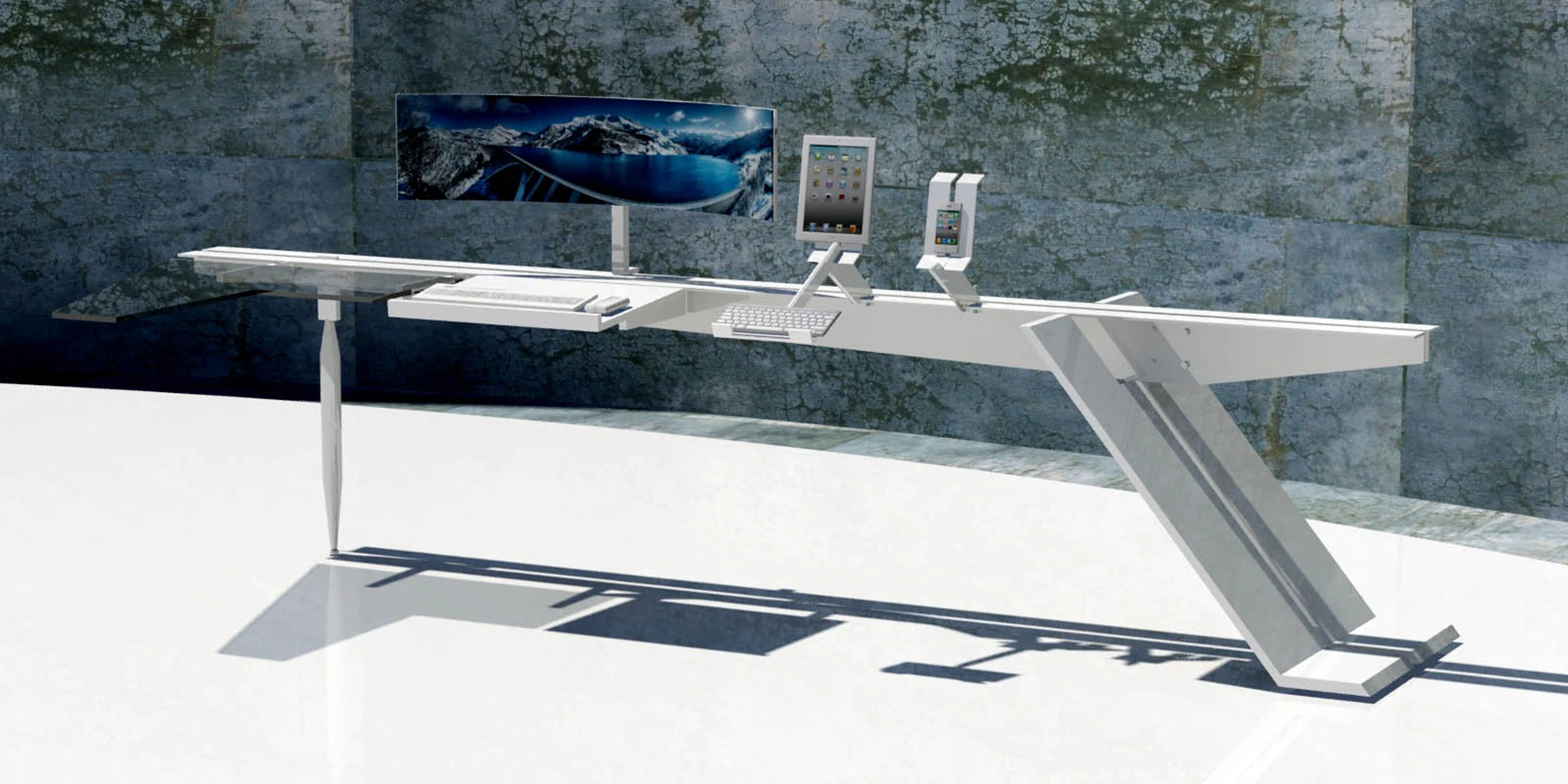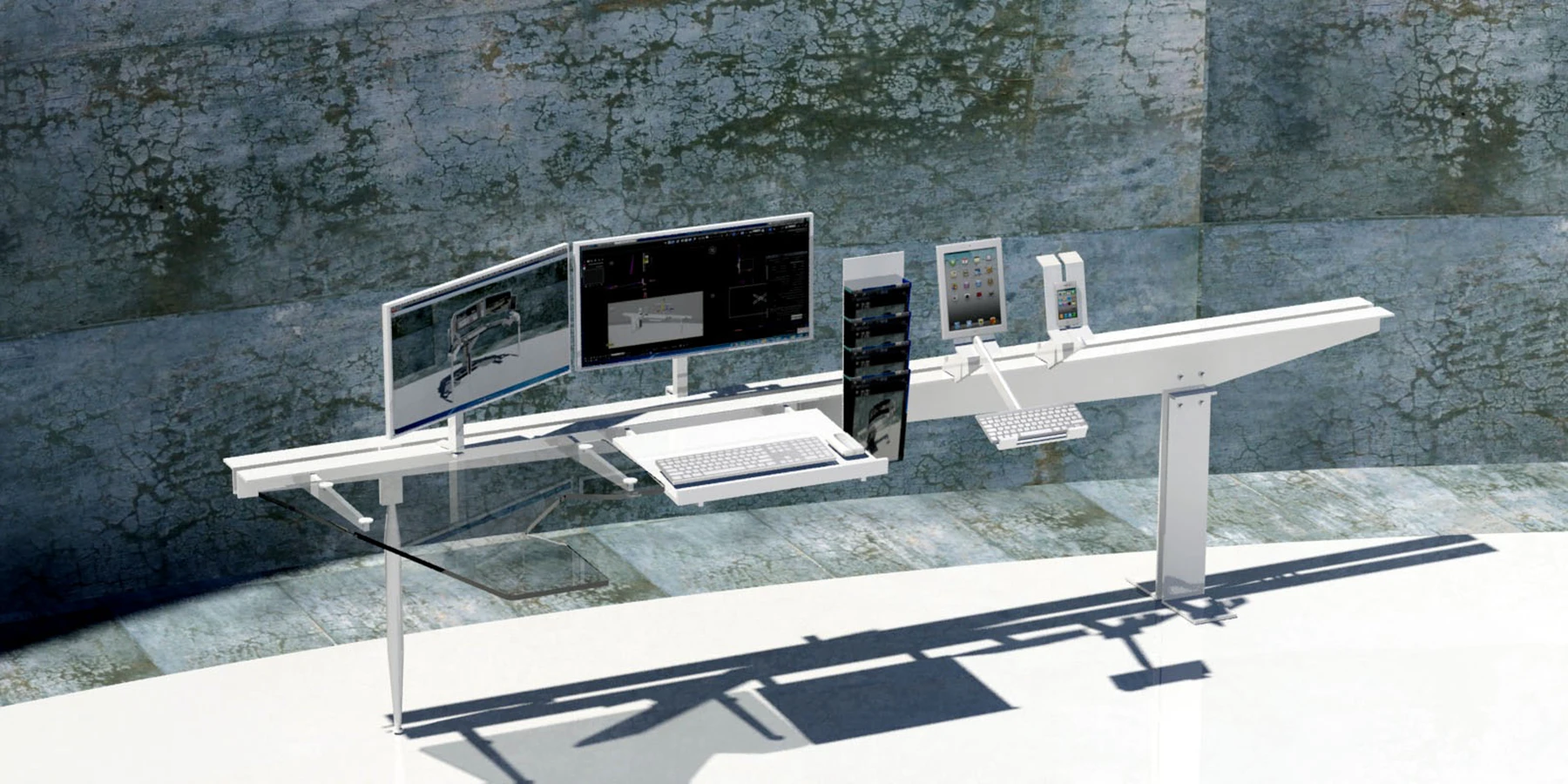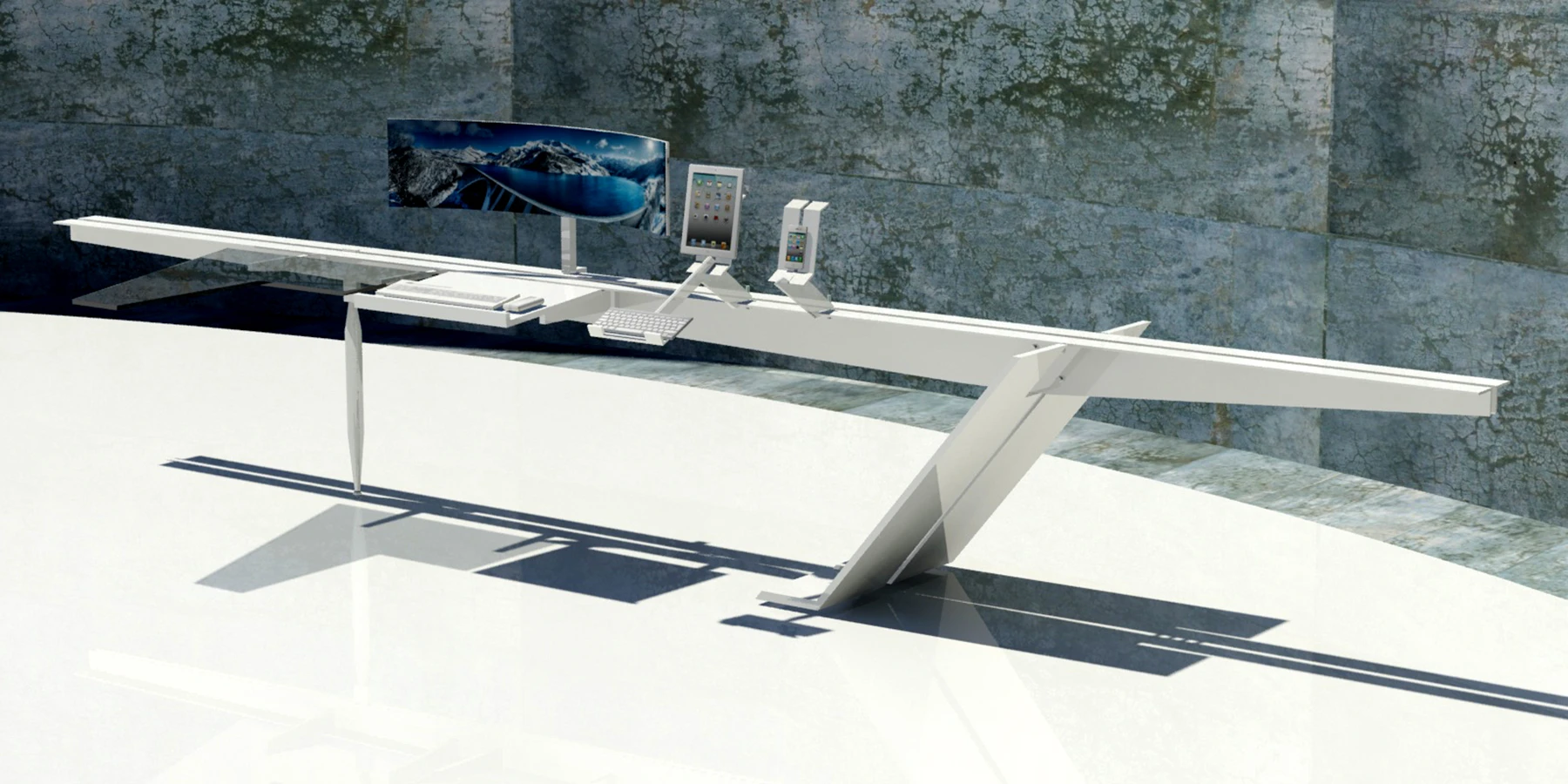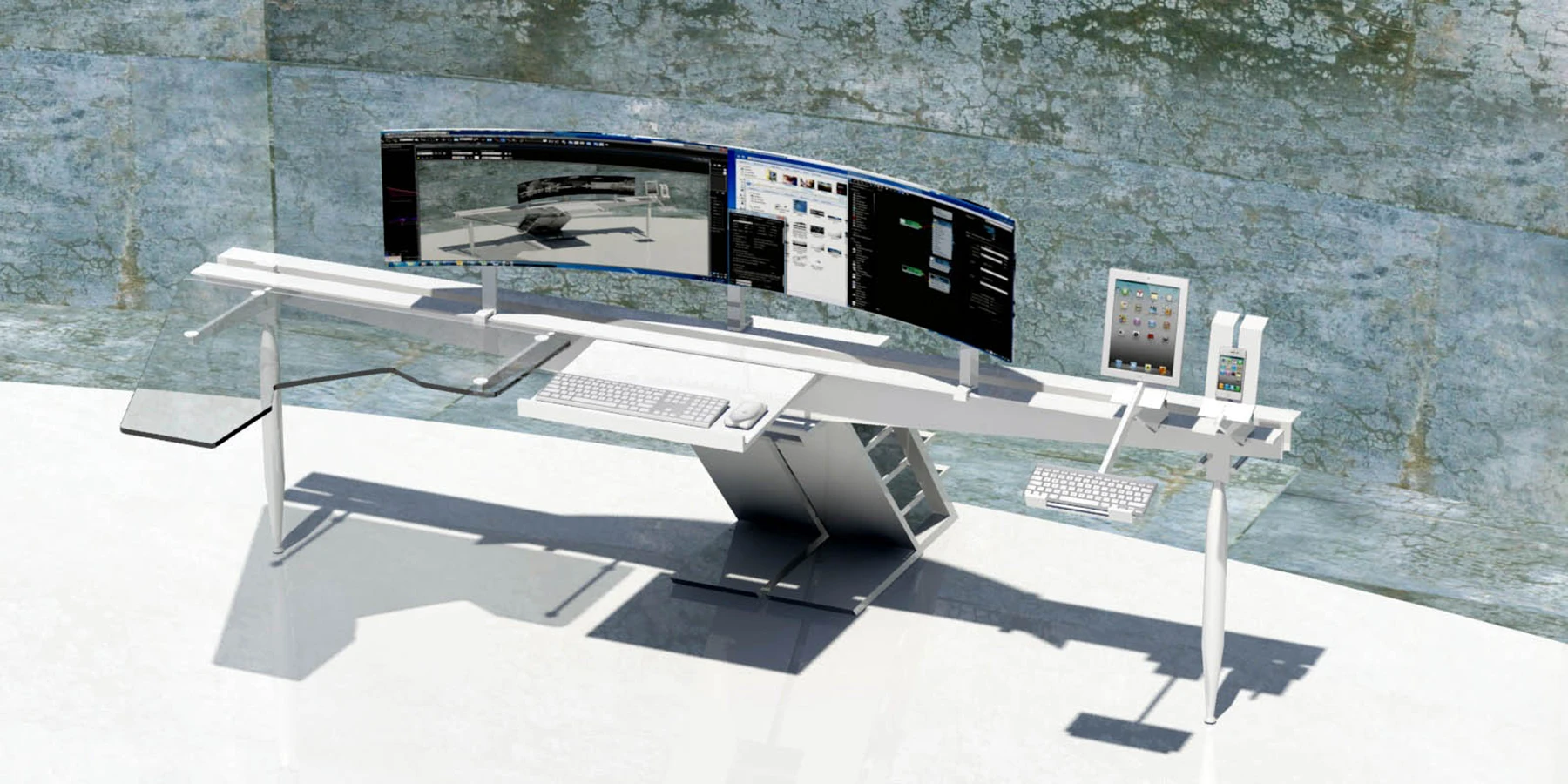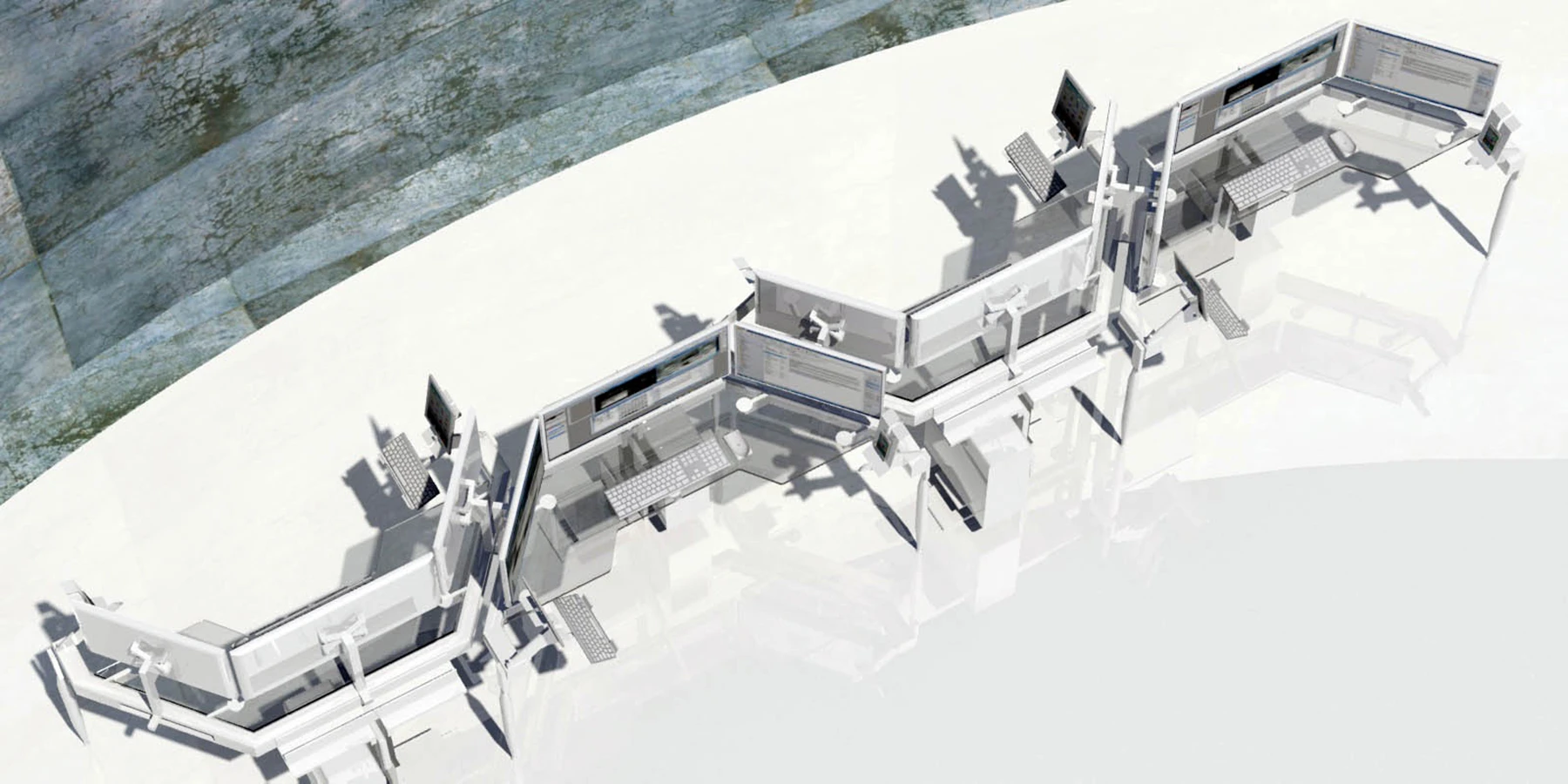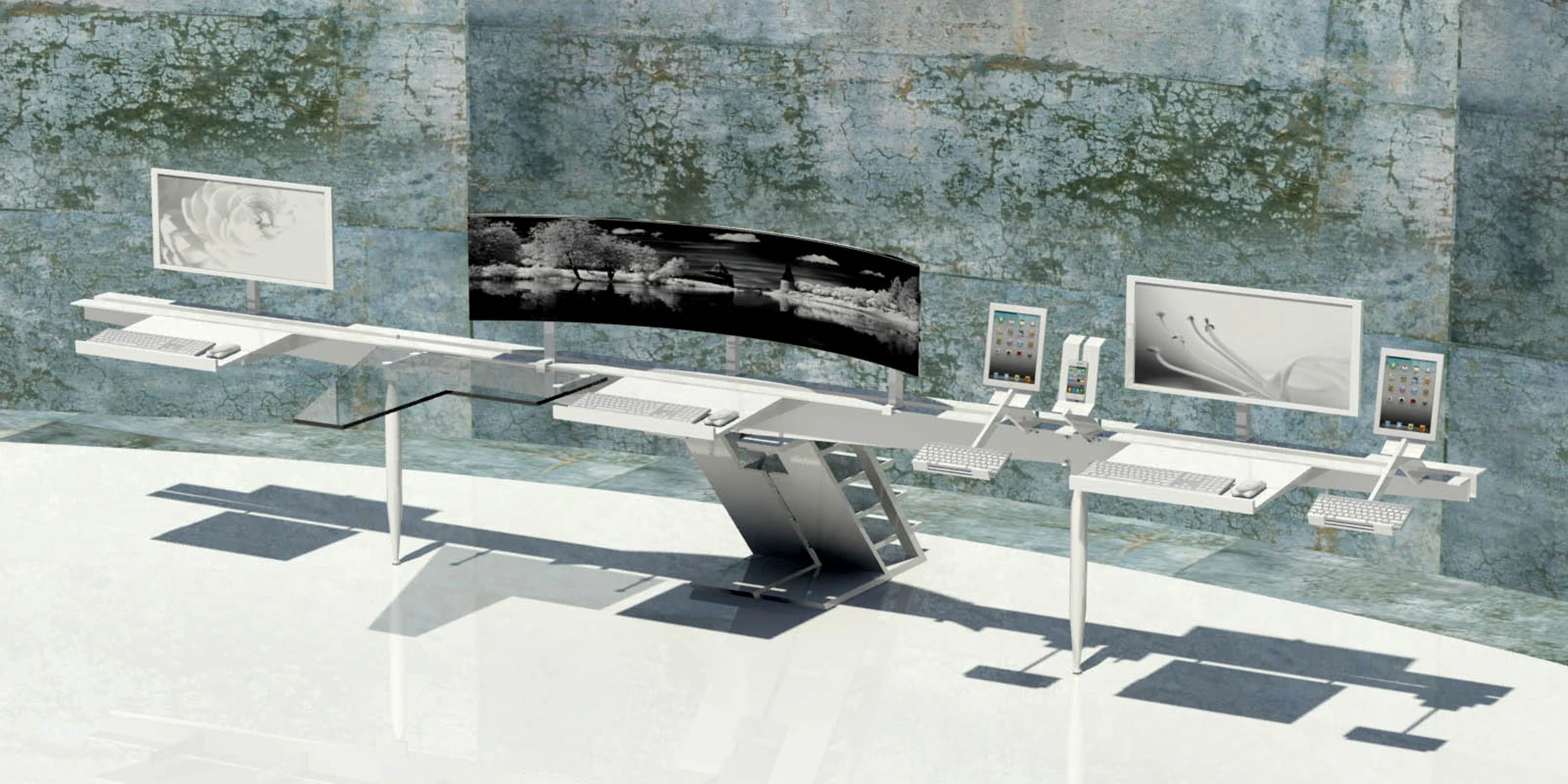The Architecture of Data:
From Building to Workstation



The organization of systems in Architecture: Architecture of Data
As technology continues to flex its muscles, corresponding physical and engineering requirements influence our built forms and spaces. Increases in equipment with a high rate of evolution drive the aesthetic and design of the workplace environment. New data centers responding to exploding needs of data storage and information access and transfers will drive information flow at levels never seen before. Designers need fresh approach to manage the ever-expanding infrastructure within architecture, interiors, and furniture systems.
Consider the architecture of data alone, and the unique and fast-evolving designs for data centers, as this provides unique insights into optimizing information access, with clear lessons and foretelling futures. Structured columns and planes of network cables, server nodes, and IDF racks provide a robust and efficient data storage, access, and flow of information. Within modular racks of servers, are populated as load requires. Bladed racks maintain operational flow, complete with in-door coolers and air conditioning redundancy, heat recovery, containment aisles, UPS (Uninterrupted Power Supply), and fire suppression within a controlled humidity environment. These highly sophisticated and efficient solutions require similar efficiency at the user level. The workstation of today needs to optimize cabling and power efficiencies, provide plug & play for multiple devices and inputs, incorporate modular solutions, and central to the theme, accommodate the Fat Beam. As designers, Frederick & Cederna apply these logics to the terminals and interfaces where we work, in the FatBeam5™, discussed and illustrated below.


FatBeam5™
1. Noun Formal
Fat Beam Workstation/Release 5; the channel of data and information utilizing high speed data transfer via fiber optics/5th Release;
2. Noun/Informal
The wide open & fat channel of data that is the river of life for gifted Internet users, gamers, geeks, and hackers mainlining and mining data.
FatFarm™
1. Noun Formal
The data source: the server farm or data farm of origin.
2. Noun/Informal
The source from which Far-Away-Transfer (FAT) beams of fiber optics originate.
The FatBeam5™
To meet data speed and volume requirements for today’s users, we provide a fat data pipe bridging the data farm of origin and the end user: The fatter and faster the pipe, the happier the user.
The fiber optic cable is a beam of many sorts. The data flow within is a living beam of fiber optic and flowing light, as well as a beam bridging data source and end-user. The channel through which data travels has many names, broadband, big data, wideband, to name but a few. Workstations of Frederick & Cederna Architects put these channels and beams to work with highly efficient, modular, and applicable system architectures.
The Stand-Alone or Single Workstation
Evolution of Process & Equipment: Efficiency, Modularity, and Reduction
The supporting structure of a workstation must accommodate many devices. Single or multiple personal computers, consoles, and devices should be supported by a main structure and travel up and down with the sit-stand motorized desktop to optimize cable lengths to minimum distances.
While a conduit for power and data and wiring harness, the beam supporting the desktop doubles as the support backbone for screens, laptops, tablets, and cellphones.
Modular plug-in attachments fasten to the supportive beam or cut-away tube and connect to the data spine, providing multiple points of entry for additional devices. As operators move enthusiastically toward paperless work habits, the work surface may be reduced accordingly, or even eliminated entirely.
Design should eliminate physical connection wherever possible. Interfaces and accessories may be linked via Bluetooth connection.
A Bluetooth keyboard can include a toggle between multiple devices such as the personal computer, cellphone, or tablet devices. Docking ports and drop-in chargers also extend flexibility of location of the input devices.
Personal Space: FatBeam444™ Surround Desk
In a dense workstation environment with multiple users connected enfilade mixed and additional stand-alone workstations, the workstation itself may contribute greatly to definition of the personal space. Large, curved monitors effectively replace workstation fabric dividers and surround the operator in immersive media, image, and content. The FatBeam444™ provides a secure and psychologically comfortable environment in which to work. The operator feels enveloped within an immersive and high-definition workspace. Content, media, files, information, all are on a work surface close to the operator. This wrapping of the operator through surround-desk brings the virtual screen closer to the body, including monitors, iPads, and cellphones. Ergonomics are improved with a greater ease of moving between interfaces and equipment, and from one task to another.
Interfaces
The keyboard, mouse and touchscreen provide today’s common interface between data and user. Wires to keyboards and mice are disappearing as batteries and port chargers obviate the strings of attachment. Keyboard and mouse should allow for a separate height adjustment as the distance from keyboard to screen center will vary from operator to operator. Ample surface should be provided for the mousepad as five feet of screen require significant mouse travel.
Multiple or Linked Workstations
Single-Loaded Spine to Workstations
Unique to workstation clusters: Clusters allow for a flexible number of core group users with an ability to expand, contract, or reconfigure for working groups.
Designs optimize efficiency in provision of power and data, allowing reduction in costs. Spines of communication fiber optics and power circuits service rows efficiently.
Innovations in the desk designs accommodate the linear train of desks and lengthy wiring with flexibility. Efficient geometries in connected workstations allow a greater density of workstations and more optimized work surface per workstation. Unifying systems include components and modules. Multiple operators and devices plug into a modular component workstation architecture.
Double-Loaded Spine to Workstations
The planimetric configuration above illustrates optimization of workstations in dense configurations. The desk design shares split hexagonal desk geometries for linked and tighter grouping.
In practice, the configuration both promotes group interaction while retaining a sense of privacy. Desk geometries dovetail into each other allowing three curved monitors with 120-degree view of monitors. Varying configurations and linked desks allow efficient work surface per station and occupy less real estate in the plan.
Walk-Up Workstations in Collaborative Environment
The Sit-Stand Desk Works.
A high-efficiency workstation must enable the operator a generous range of movement and physical activity. High tech offices and corporations go to great lengths to increase operator efficiency and maximize productivity over the working day. Efficiency is equally important to the individual. The ability to maximize focus and productivity, and increase effectiveness is an on-going requirement for high-functioning individuals. The sit-stand desk is a readily accepted solution to extend operator work effectiveness through mobility, allowing us to work healthier, and perform better. Benefits include lowered risk of weight gain, lowered blood sugar levels, lowered risk of heart disease, improved mood and energy levels, and boosted productivity. Similarly, the connected desk allows for sit-stand operator functionality. As research continues to explore the benefits or drawbacks over the long term of sit-stand solutions, it is clear to most users they provide relief from the eight-hour sedentary position for the high-tech worker of today. User feedback most often confirms the change in posture and skeletal position reaps benefits in productivity and healthy postures.
Current designs of the sit stand desks provide a straight or an “L” shaped desktop supported by one, two or three legs with synchro motors that raise and lower the working surface. Workstation designs accommodate the variable height work surface. It must be remembered, the accompanying chair provides for low and mid-level desk heights, and retracting to a stowed away position while the desk is at full standing height.
The Future of Data Flow
Conclusion and Remarks on the Future of Technology in the Workplace
Potential future technological capabilities and innovations are unpredictable, and the implications and interactions are complex, both in the office and at home. Fasten your seatbelts, we’re in for a ride.
What lies ahead?
The working environment, for the workstation, conference room, and collaborative spaces, as discussed on these pages responds to current technologies in play today. Futures in workstation design are also foreseeable. Today’s development must anticipate that technical evolution will have greater impacts.
PC Extinction
While the data flow is an evolving channel, the personal computer will not long be with us. As data centers and cloud technologies proliferate, the workstation and data channel will provide the user connection to always on, secure, and available-anywhere data. While the local memory storage has foreseeable life remaining, processing will later follow the path of memory, moving to distant and efficient processing centers.


The Future of Light:
Standard office design of today incorporates Wi-Fi for visiting laptops or movable data access.
Wireless data will soon undergo significant upgrades. Current research in twisted light and other technologies foretell of a wireless data transfer that will be faster than fiber and hard cable connections.


The Interface: Data & User
In our future, the keyboard, mouse and physical screen will go away as users relinquish cumbersome tactile devices.
The interface may take the form of tactile gloves with built-in sensors that facilitate three-dimensional and multiple points of entry rather than the flat, single-plane, on-off function of our current keyboard, touchscreens, and mice. Evolving desking systems will similarly facilitate and augment this interface between the data and user.
